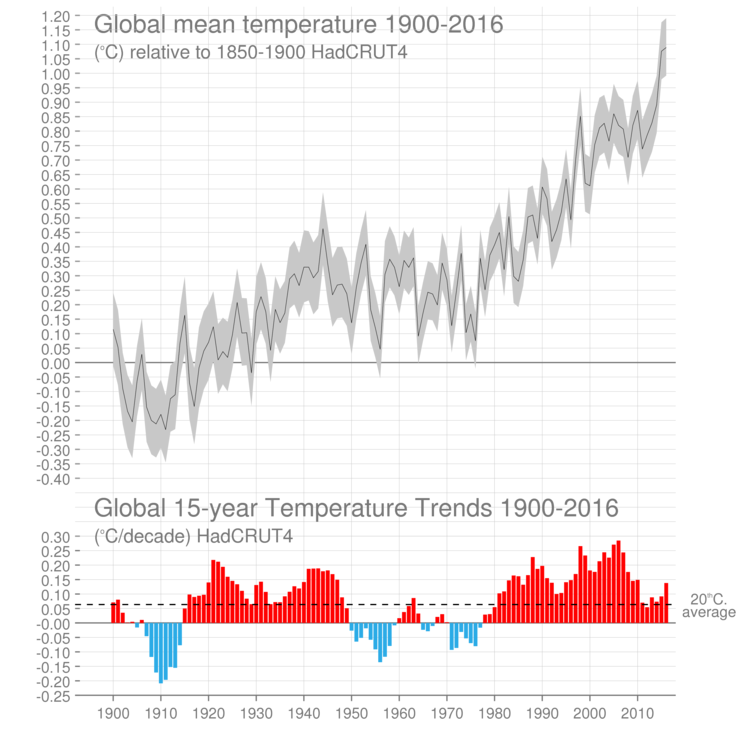A Pacific flip triggers the end of the recent slowdown
Author: Press Office
17:00 (UTC+1) on Mon 18 Sep 2017
After three record years for global temperatures, the recent slowdown in average global temperature has ended.
The slowdown in the rise of average global temperature had been observed in the recent temperature record, but with the last three record years, this slowdown has ceased.

Prof Stephen Belcher said: “After a period during the early 2000’s when the rise in global mean temperature slowed, the values in 2015 and 2016 broke records and passed 1 °C above pre-industrial levels. Data from the Met Office shows that the long-term rate of global warming has now returned to the level seen in the second half of the 20th century.”
Although there has been scientific debate about the exact framing of the so-called ‘slowdown’, by looking at rolling 15-year trends, the Met Office confirmed that while the globe remained at near record warmth, the rate of global warming did slow between 1999 and 2014, but now this rate has picked up once more.
Global temperatures have risen since pre-industrial times (1850–1900) by around 1 °C. The influences of anthropogenic greenhouse gas release and aerosols explain much of this increase but natural variations in climate, such as the influence of El Niño, mean that the observed temperature rise isn’t even from year to year.
Although global temperatures remained at near record levels throughout, variations in decadal climate in the Pacific led to the slowdown in the rise of Global Mean Surface Temperature.
The Pacific Decadal Oscillation (PDO) – a pattern of warm and cool phases in Pacific sea-surface temperature – can persist for a decade or more. Coinciding with the slowdown, the PDO has been in a negative phase which increases the subduction of heat to temporarily reduce the rate of anthropogenic climate change from greenhouse gases.
Professor Adam Scaife is head of monthly to decadal prediction at the Met Office Hadley Centre. He said: “The end of the recent slowdown in global warming is due to a flip in Pacific sea-surface temperatures. This was due to a change in the Pacific Decadal Oscillation which entered its positive phase, warming the tropics, the west coast of North America and the globe overall.”
With 2015 and 2016 exceeding the 1°C threshold above pre-industrial Global Mean Surface Temperature, there is increasing pressure on limiting global warming to a 1.5 °C warming threshold, as agreed in Paris in 2015. So far 2017 has also exceeded the 1 °C threshold, although the Met Office has forecast that 2017 is unlikely to be a record-breaking year as temperatures this year have not been influenced by El Niño conditions.
A greater understanding of the Pacific Decadal Oscillation’s cycles would be needed before any predictions are made about how long the PDO will remain in the warm phase.


